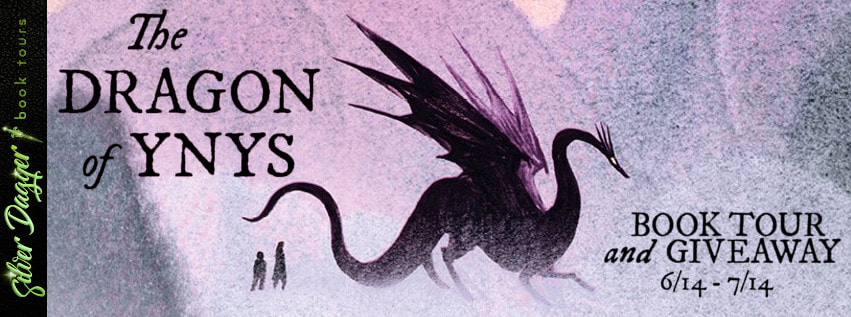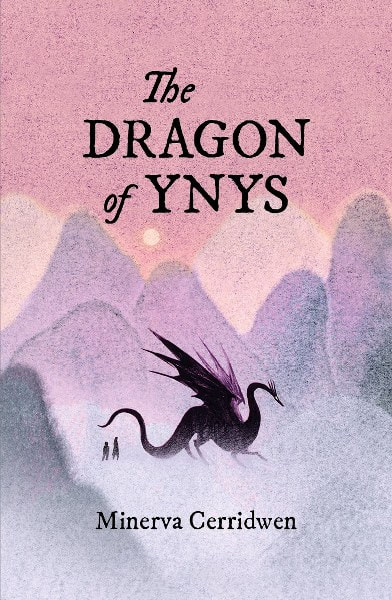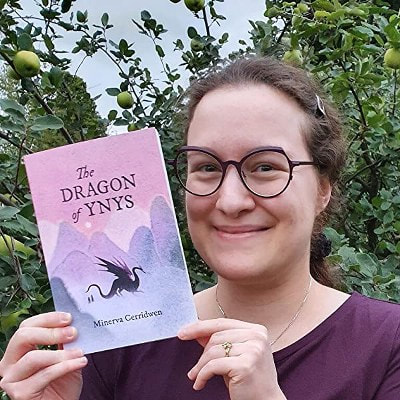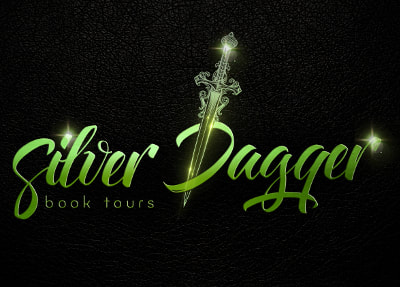If your book had a candle, what scent would it be?
Cinnamon!
What book do you think everyone should read?
If people are looking for a fantasy book with dragons and asexual representation—in other words, something somewhat similar to The Dragon of Ynys—I would recommend Havesskadi by Ava Kelly. It’s the first part of a series but can be read on its own, as it’s the only part that’s published so far. I really loved the characters and look forward to more in that universe!
If you’re looking for a light read, I really enjoyed Just Bart by E.D.E. Bell. It’s from the same publisher as my book, with a non-binary main character, a sentient magic bottle, a horse that really loves sparkles and feeling pretty, and a ghost that seems to be looking for its way in… well, I can’t say ‘life’, can I? Even in stressful times, the episodic set-up makes it easy to read.
And another general favourite is Becky Chamber’s Wayfarers series: gentle and diverse space opera that’s just brilliantly written. I still have to read the fourth part and really look forward to that!
Do you prefer to write in silence or with noise? Why?
I write best when I’m alone, with as few distractions as possible. Some soft, instrumental music usually helps, especially when it suits the mood of the story I’m writing. For example, the first draft of The Dragon of Ynys was completely written with the extended soundtrack from The Lord of the Rings and The Hobbit in the background, so it’s no wonder that the village of Ynys feels a little similar to the Shire in some ways. Music with lyrics, however, is too distracting for me, as I start paying attention to those words rather than the ones I should be writing. And the same is true when people start talking around me, so I’m afraid I’m one of those writers who dares shush people in the house when a good idea strikes.
Pen or type writer or computer?
I usually write my brainstorms and outlines by hand. I always feel like the ideas flow more freely that way, and the mechanical action of writing with a pen helps me focus. However, when I’m writing the actual story, using a computer keyboard is just a lot faster and more convenient. Whenever I hit a snag and don’t know how to proceed, I grab my paper again until the knot unravels and I can return to fluent computer-writing again!
Which books influenced the writing of The Dragon of Ynys?
First of all, classic fairy tales were a major influence. I tried to match the tone of the traditional tales we know. But as I was writing, I also remembered the Disney versions of my youth, where time and again, the prince and princess would ride off into the distance at the end, and a happy ending had to involve the wedding of a boy and a girl. This was something I quite literally wanted to go against in my story.
When we’re talking about fantasy, it’s difficult to get around Tolkien as the “core fantasy”. This is definitely true with The Dragon of Ynys: Ynys shares some of the atmosphere of the Shire as well as the place where I live—in fact, I’d say that the Shire and my town are similar in more than one way, so it’s no wonder I’ve always felt at home with the hobbits. I wrote The Dragon of Ynys with the extended soundtrack of The Lord of the Rings and The Hobbit in the background, so a little more of that feeling may have seeped in.
In the very first version of what would later become The Dragon of Ynys, there was also a more obvious link with Sherlock Holmes. Sir Violet’s role as a knight is rather that of a small-town detective, while Snap inherited some of Mr. Holmes’ sharp remarks.
But perhaps the most important influence was not found in published stories, but rather in the experiences from real people that I mostly read on Tumblr and in fanfiction with way more queer representation than I knew how to find in published books when I was younger—and especially when I didn’t read in English yet. Fortunately there’s more and more much-needed representation now, but I feel we still have a long road ahead before it becomes obvious that children get to see themselves and peers of every gender identity in mainstream stories.
What queer representation is there in your book? Why is this important to you?
It was important to me to have an aromantic asexual main character. I’m ace and aro myself, but as a teenager I didn’t know any orientations outside of gay, straight and bi existed. For a while, I identified as bi, because I had the same romantic and sexual interest in girls as in boys—namely, none. Hearing people around me talk, it sometimes sounded as if I was the only one for whom no orientation was quite right, and that feeling of not fitting in made me settle on the characterisation “just weird”. Only when I got a Tumblr account and finally saw the words “asexual” and later “aromantic” defined did I learn that there was a word for how I felt, for how I was. I wasn’t alone. In fact, there was a study that said that 1% of the population is asexual. In the 7.9 billion people that live today, that is 79 million. I don’t think it would be possible to feel alone in that crowd, and yet society tries to make us feel as if something is wrong with us when we don’t experience romantic or sexual attraction.
Knowing that an orientation exists and that there are more people like you in the world can be tremendously helpful. If I had seen more aro, ace, and genderqueer representation when I was younger, I’m pretty sure it would have been easier to grow up accepting and loving who I was. And learning about other orientations definitely helped me understand other people around me. This is something I want to pass on in my writing—so badly, in fact, that it became a large part of the plot of The Dragon of Ynys. We need stories with diverse characters, to listen to voices that are not often heard, and to learn about subjects that might scare us as long as they remain part of the Great Unknown.
What advice would you give new authors?
Tell the story that you’d love to read, or that you really feel you need to tell. Learn from other people who edit your work. If you’ve never participated in a writing or storytelling course online, I’d definitely recommend trying it, but don’t get lost in all the writing advice you see going around. Take what you feel is useful in the context of your story, and leave whatever doesn’t feel relevant. You have your own unique voice to tell your story, and no one should try to soften it or make it feel less like you. But also remember that doesn’t mean you should close yourself off for comments from fellow writers or editors. Always listen to what someone has to say and then decide whether it works for you or not. Ask yourself if the message you want to give becomes clearer after applying an edit or not, and base your decision about whether a change is necessary or not on the answer.
Describe your writing style.
I think my writing style is rather simple. I’ll usually try to be ‘efficient’ with words; I’m not generally filling entire pages with descriptions. Usually I find it easiest to write dialogues or inner monologues. I try to put a little humour in my writing and I’m not afraid of inserting a pun. Getting to play with different languages at the same time sometimes earns me a funny expression in English when I translate a little too literally what I would say in the same situation in Dutch. This probably shows in my choice of words sometimes.
What is your writing process? For instance do you do an outline first? Do you do the chapters first?
I usually have an idea brewing in my mind for a while before I start brainstorming and outlining on paper. Most often, this idea starts from a set of characters and an atmosphere. Then I start pondering what could happen to these characters, and take my plot from there. For The Dragon of Ynys, I wrote out what would happen chapter by chapter, like a very compact script. Then I wrote it out chronologically as it is in the book.
When I was younger, I used to start writing scenes at any place in the story, but that way I often found myself discouraged and wouldn’t finish the story in the end, because I’d already written the scene I was most looking forward to, or because I’d created plot holes by not allowing the plot to play out naturally, which meant I had to rewrite a lot before being able to continue. That’s why I now won’t write more than a few sentences of future scenes before I’ve actually reached that particular part of the story, just to catch a mood.
What are you currently reading?
Royal Rescue by A. Alex Logan, published by NineStar Press. It’s a fantasy book with an aromantic asexual main character who sets out to change the way royal offspring is meant to pair up by going on quests to rescue one another. This prince manages to rescue himself and the dragon who was guarding him, and it all leads to a grand adventure. It’s a light read that keeps my attention even when I’m tired and have very little focus, with fun characters and of course queer representation!
I also sometimes sit down with Oats in the North, Wheat From the South: The History of British Baking, Savoury and Sweet by Regula Ysewijn, to read about British baked goods and their rich history and cultural importance, or simply to pick out the next recipe I’d like to make myself!







No comments:
Post a Comment
Please be respectful, all comments are moderated. Please reframe from comment fights, everyone has a right to their own opinion, if you don't like it, to bad.
I love to hear your thoughts, and crazy idea's. I'll make very effort to replay to your comment and views. :)
-Cheers.